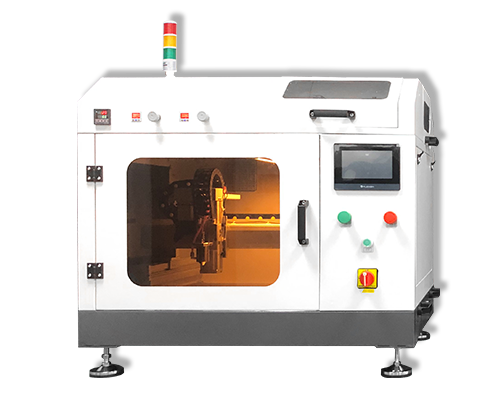Types of Membrane Electrodes
Membrane electrode assembly (MEA) is the core component of a proton exchange membrane fuel cell and consists of proton exchange membrane (PEM), catalyst layer (CL) and gas diffusion layer (GDL). The membrane electrodes can be classified into three types, namely GDE membrane electrodes, CCM membrane electrodes and ordered membrane electrodes.
1. GDE membrane electrode
Gas diffusion electrode (GDE), meaning gas diffusion electrode, is made by using the gas diffusion layer as the support body, coating the catalyst on top of the gas diffusion layer, and then thermally pressing the GDE on both sides of the plasma membrane to form the membrane electrode. This method is a simple and technically mature preparation process, but has two disadvantages. The first is that the catalytic layer produced is thicker and requires a higher Pt loading, resulting in a lower catalyst utilisation rate; the second is that the contact between the catalytic layer and the plasmonic membrane is not very tight, resulting in an increased interfacial resistance and a poor overall performance of the membrane electrode. Therefore, GDE membrane electrodes have basically been eliminated.
2. CCM membrane electrode
Catalyst-coated membrane (CCM), in the preparation process, the catalyst is first coated on both sides of the proton exchange membrane to form the CCM, and then the gas diffusion layer is hot pressed on both sides of the CCM to form the membrane electrode. Compared with the GDE membrane electrode, the catalyst in the CCM membrane electrode is firmly bonded to the proton membrane and does not easily fall off, which can effectively improve the interfacial resistance between the catalyst layer and the proton membrane and reduce the proton transmission resistance at the interface, resulting in better performance. The catalyst/proton membrane interface is the interface where protons are transferred from the catalyst to the proton membrane. If this interface is not tightly bonded, it will lead to an increase in the resistance to proton penetration through the interface, resulting in a lack of proton supply and an increase in internal resistance. Therefore a good contact can effectively reduce the interfacial resistance. In the case of the gas diffusion layer/catalyst interface, because of the microporous layer used as a transition, this interface contact is usually relatively good and there is no poor contact. In addition, the thinner catalytic layer of CCM membrane electrodes can improve the efficiency of catalyst use and reduce the amount of catalyst used. Therefore, CCM membrane electrodes are now the mainstream process method for commercial membrane electrodes.
3. Ordered membrane electrodes
There are two ways of preparing ordered membrane electrodes, one is to use the electronic conductor as the ordered substrate and the other is to use the ionic conductor as the ordered substrate. Taking the electronic conductor substrate as an example, nano arrays of carbon are first grown on the plasmonic membrane to form an ordered array perpendicular to the plasmonic membrane, and then Pt particles are loaded onto the carbon arrays. The gas channels and electron channels formed by such a structure are straight, and the gas transport and electron conduction paths are shorter and faster, which can greatly improve the performance of the membrane electrode.
4. New membrane electrode preparation method – ultrasonic coating
Ultrasonic coating systems can produce highly durable, homogeneous carbon-based catalyst ink coatings on electrolytic processes for fuel cells and proton exchange membrane (PEM) electrolysers such as Nafion, without membrane distortion. Homogeneous catalyst coatings are deposited on PEM fuel cells, GDLs, electrodes, various electrolyte membranes and solid oxide fuel cells with sprayed suspensions containing carbon black inks, PTFE binders, ceramic pastes, platinum and other precious metals. Other metal alloys including platinum, nickel, iridium and ruthenium based fuel cell catalyst coatings in metal oxide suspensions can also be sprayed using ultrasonics to create PEM fuel cells, polymer electrolyte membrane (PEM) electrolytes, DMFC (direct methanol fuel cells) and SOFC (solid oxide fuel cells) which can produce large loads and high cell efficiencies.
Cheersonic ultrasonic coating systems produce highly durable, uniform, coatings of carbon-based catalyst inks onto both fuel cell and electrolysis processes for proton exchange membrane (PEM) electrolyzers such as Nafion, without deformation of the membrane. There is benchtop ultrasonic coater UAC4000L which is popular in laboratory R&D and low volume production.
About Cheersonic
Cheersonic is the leading developer and manufacturer of ultrasonic coating systems for applying precise, thin film coatings to protect, strengthen or smooth surfaces on parts and components for the microelectronics/electronics, alternative energy, medical and industrial markets, including specialized glass applications in construction and automotive.
Our coating solutions are environmentally-friendly, efficient and highly reliable, and enable dramatic reductions in overspray, savings in raw material, water and energy usage and provide improved process repeatability, transfer efficiency, high uniformity and reduced emissions.
Chinese Website: Cheersonic Provides Professional Coating Solutions


